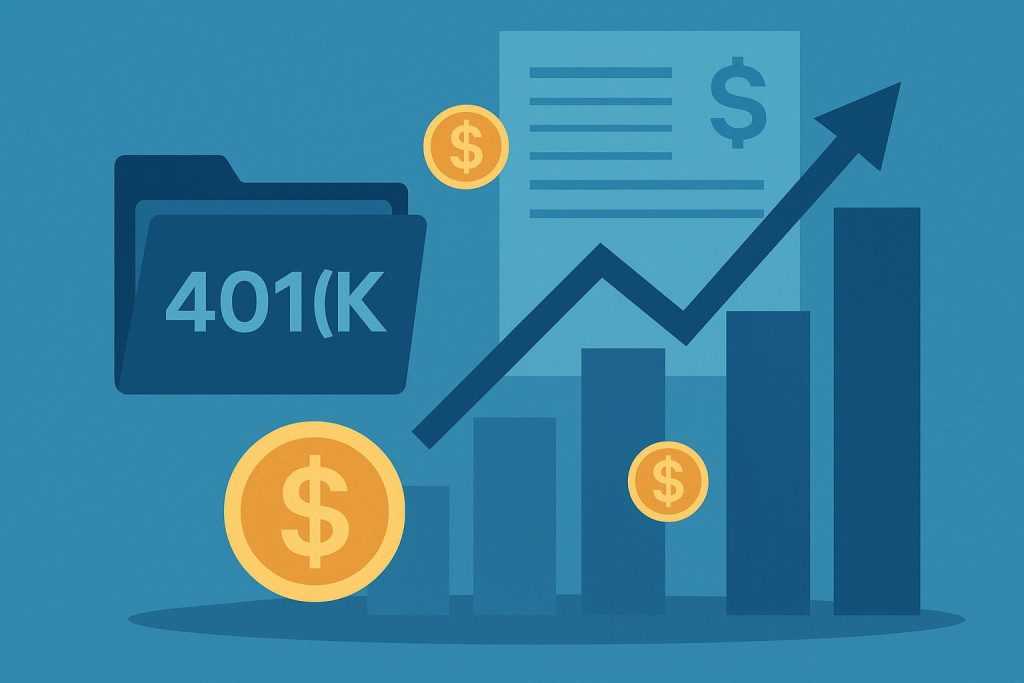New York–based sales executive Jerry Giovinazzo brings over 30 years of experience in financial and benefits services. As regional vice president of sales for John Hancock Retirement Plan Services, Mr. Giovinazzo has led strategic territory expansion and cultivated advisor partnerships that drive consistent performance in one of the firm’s top markets. His work aligns with the evolution of the retirement landscape, including the surge in participation and plan design innovation seen across 401(k) plans. Having previously held leadership roles at Paychex, Yellow Book USA, Register.com, and Dun & Bradstreet, Jerry Giovinazzo’s career reflects a commitment to growth, client engagement, and collaborative success within the retirement planning industry.
401(k) Plans Witness Historic Levels of Participation, Growth
For retirement planners, employer-sponsored 401(k) plans are back in the spotlight. According to a 2024 retirement analysis survey by Fidelity Investments, the number of 401(k)-created millionaires broke a new record in Q4 2024. The number rose 27 percent year-on-year, reaching 537,000, with IRA-created millionaires increasing eight percent to 344,000. The average 401(k) millionaire is age 59, and the key to attaining this milestone is starting to save early in one’s career and consistently contributing over the years.
Those who have been contributing for fewer years also witnessed significant gains, with 15-year Gen X savers achieving 18 percent more year-on-year ($589,400). For Gen Z savers who have contributed to an IRA for five years, the average savings increased 66 percent to $52,900. While average balances in 401(k) declined slightly from Q3, the $131,700 average savings is still the second-highest on record.
Another positive sign was steady total average 401(k) savings rates of 14.1 percent, which is near the optimal 15 percent level. One factor in this has been employers proactively designing features into plans that encourage high levels of savings. Since 2019, the percentage of plans with a Roth IRA option attached has risen 20 percent, and nearly 40 percent of plans default to auto-enroll workers at a five percent rate of contribution or higher.
The Fidelity survey also found that nearly a third of clients expected to adopt at least seven optional provisions within the SECURE 2.0 Act, with the average anticipated time to implement such retirement savings provisions being half a year.
Section 107 increases the age for required minimum distribution (RMD) to 73, with this set to rise to 75 in 2033. This allows retirees to save and invest longer, gaining them even more compound assets. Section 302 reduces the excise tax on certain accumulations in qualified retirement plans. The penalty assessed when one fails to take RMD has dropped from 50 to 25 percent. If retirees correct their RMD mistake in a timely fashion, the penalty drops further to 10 percent.
For employers, Section 102 boosts credit from 50 percent to 100 percent for small employer pension plan start-up costs. Such businesses can have as many as 50 employees and still receive this credit. Section 113 allows employers to offer small financial incentives, such as gift cards, as a way of incentivizing workers to contribute to workplace retirement plans.
It’s also easier now to take unforeseeable emergency or hardship withdrawals from one’s retirement account. Employees simply self-certify that an unforeseeable emergency or event constituting a hardship occurred. This takes the place of having the employer verify such a hardship or life emergency.
The Institutional Retirement Income Council’s (IRIC) executive director believes that one reason for 401(k) growth has to do with the continued decline in traditional pensions, which means that employees and employers must work together to ensure secure retirement income. Sponsors’ responsibilities are shifting from simply aiding accumulation to making sure that participants receive retirement security in the long run.
The IRIC executive notes that innovative retirement income solutions are constantly coming on board as investment firms, middleware technology companies, and insurance providers seek new strategic possibilities. Providers emphasize diversified approaches that incorporate alternative investments, and various distribution options, from retirement paycheck systematic withdrawal to annuity retirement income. Employers, tasked with ensuring a financially secure retirement for their workers, are seeking out income streams that are reliable, predictable, and easy to follow.
About Jerry Giovinazzo
Jerry Giovinazzo is a seasoned sales leader and regional vice president at John Hancock Retirement Plan Services in New York City. With more than three decades of experience in financial, advertising, and benefits sales, he has consistently delivered top-performing results through strong partnerships and strategic market development. His career includes notable success at Paychex, Dun & Bradstreet, Register.com, and Yellow Book USA. Recognized among NAPA’s Top 100 DC Wholesalers for multiple years, Jerry Giovinazzo values teamwork, accountability, and relationship-driven growth in helping clients pursue long-term financial success.

